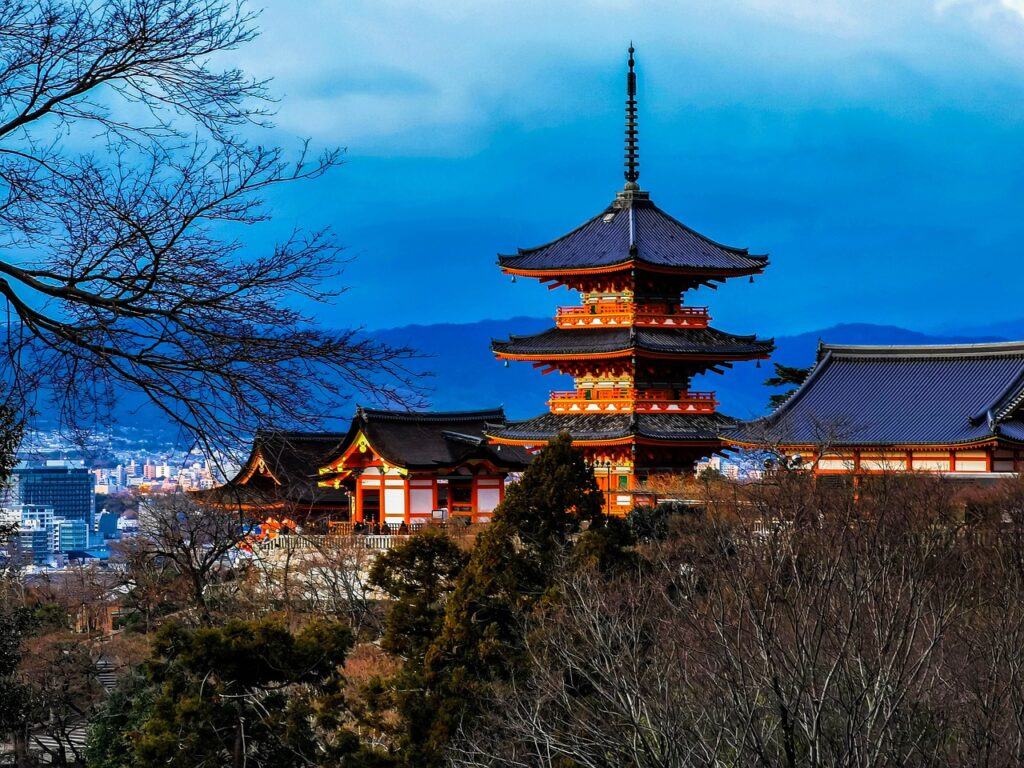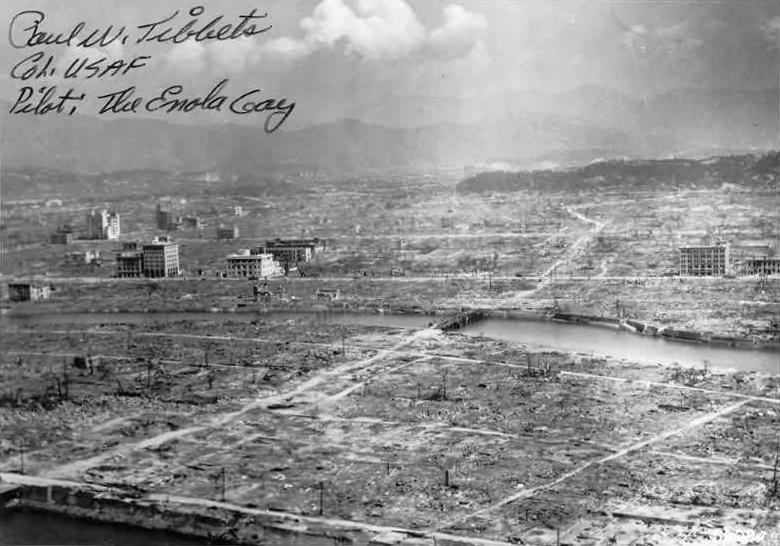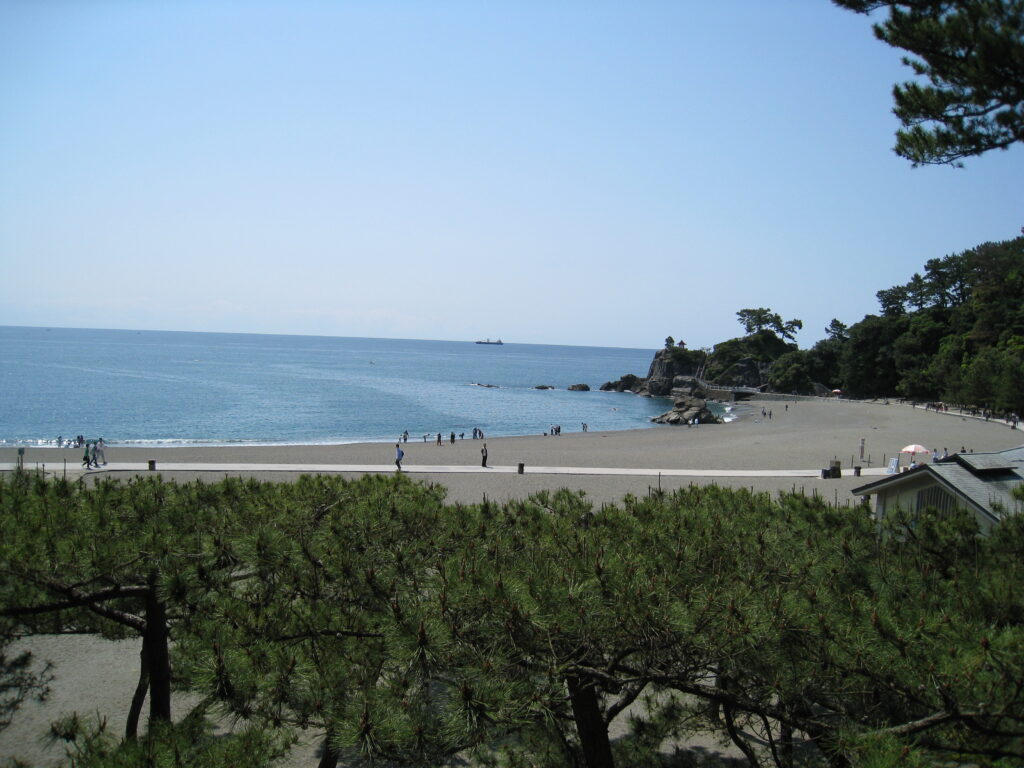Having passed through some of the heart of Honshu – Japan’s main island – including stops in Nagano, Gifu, Kanazawa, and my favorite Japanese city Kyoto,
[Free image from Pixabay.]
we were nearing the end of our three plus weeks there and about to wrap up the trip with the biggest point of negotiation P and I had during the planning stage. I knew that I wouldn’t travel to Japan without stopping in either Hiroshima or Nagasaki neither of which was a place she was particularly eager to visit. In exchange for her agreement to a stay in Hiroshima, I allotted two days in Kochi – a relatively small city by Japanese standards – because it not only provided the opportunity to visit the island of Shikoku but more importantly for P because of its proximity to a number of Pacific Ocean beaches. I have never been a loll in the sand by the ocean sort of traveler but anyone who has read other posts on this blog almost certainly knows that.
A stop in Hiroshima.
Before I write about a more pleasant experience, I need to record a few of my impressions from our stay in Hiroshima. Thoughts of this city have been in my mind because in the fall of 2021 I read Lesley M M Blume’s book Fallout The Hiroshima Cover-up and the Reporter Who Revealed It to the World and experienced a new wave of discomfort with the U S decision to become the only nation to have ever used a nuclear bomb in the course of a war.
Although much about the city seemed to indicate significant recovery in the not quite four decades that had passed since 6 August 1945, much about the city would not allow visitors to forget what had transpired there. And rightfully so.
As one might expect, the city has dedicated a significant amount of space to remembrance and central to that is one of the few buildings that partially survived the explosion.
[From visithiroshima.]
Hiroshima sits at the delta of the Ota River which splits into six tributaries all of which flow through it. I believe the waterway in the photo above is the Motoyasu River with the Peace Memorial Park and Peace Museum visible on the island beyond the dome. Our visit to this museum remains one of the most sobering experiences of my life. Many of the displays and exhibits in the museum are utterly indelible (I will warn you that some of the images in the linked page will likely be disturbing.) But perhaps the most sobering thought is that in 1945 “Little Boy” (15 kiloton equivalent) and “Fat Man” (the 22 kiloton bomb dropped on Nagasaki three days later) constituted humanity’s entire nuclear arsenal and as we all know, that is no longer the case. This photo shows what Hiroshima looked like just moments after Little Boy’s detonation.
[From origins.osu.]
According to statista.com, in 2020, the yield of the largest atomic weapon in the U S arsenal was a submarine launched Trident missile with a yield of 455 kilotons while Russia’s largest weapon is an ICBM with an 800 kiloton yield meaning these two weapons alone carry 34 times the combined destructive power of the bombs that leveled Hiroshima and Nagasaki. It’s a sobering thought.
An unexpected tour.
For me, the intensity of my emotional hangover from our visit to Hiroshima actually made the prospect of a day at the beach seem appealing. To get to Kochi, we needed to take a three or three-and-a-half hour ferry ride across the inland sea to the city of Matsuyama. Once there we would then need to take a two-and-a-half hour bus ride to the eastern side of Shikoku. What I didn’t know was that we would still be about half an hour by bus from the beaches. (One thing you need to keep in mind is that this trip happened in 1982 long before the days of the internet and the maps of Japan I had, made it appear as though Kochi was, in fact, on the coast.)
As you can see from the video, many small islands dot the crossing and since it was a pleasant day, P and I decided to spend as much time on the upper deck as we could. Soon after the boat departed and before we reached the intermediate stop at Kure, a Japanese man I think slightly though not much older than us approached and asked if we were Americans. When we answered affirmatively, he asked if he could stay with us for the duration of the trip so he could practice speaking English. He explained that he was a pilot for J A L but only on domestic flights. In order to fly internationally (which not only meant an increase in prestige but a big pay raise as well) pilots had to be fluent in English. We were happy to accommodate him.
We probably made mostly small talk telling him about our experiences in Japan to that point, where we were going on Shikoku and why, and other miscellany. Clearly, I don’t remember any of the specifics of this conversation but I do recall a general impression that he had a long way to go to reach fluency in English.
We docked at the terminal in Matsuyama and the unexpected happened. Not only did our new pilot friend hail our taxi, he got in, rode with us to the bus station, and paid for the taxi. We thanked him for his generosity but he wasn’t finished. He took our luggage, checked it in a locker, and insisted that he would take us to see Matsuyama Castle. (There may have been other stops on his tour but I have vivid memories of the castle for reasons that will shortly become clear.)
Although the gesture was quite kind and intended as such, P and I silently rolled our eyes at each other and tried to talk our way out of it but this time failed to find a diplomatic escape. There were several reasons for our reluctance. First, we had purchased our bus tickets in advance and were uncertain if we could use them on a later bus. Second, we wanted to cross the island in daylight so we could enjoy the scenery. He assured us he would see to all of that.
But the deeper reason was that we were tired. You see, we’d been in Japan for nearly three weeks by that point and I’m not sure a day went by when we didn’t visit either a Japanese garden, a shrine (Shinto), a temple (Buddhist), or a castle (feudal) and sometimes all on the same day. We’d had our fill of those but had no choice other than to roll with it.
As it turned out, Matsuyama’s castle was unique
and in the end we were both delighted to have visited it. In addition to the uniqueness of the castle, we had in the tenshu one of those astonishing “small world” moments that seem outrageously unlikely. While taking in the 360 degree view afforded by the tenshu, there was one other obviously western couple. One of them, a tall red-haired fellow, approached and quietly asked if we spoke English. Of course, we began a conversation. We started with the typical what’s your name and where are you chat between strangers. He said he was from Austin and I replied that I had a relative there who was a professor at the University of Texas. I shouldn’t need to tell you that he had taken some sort of American Literature course that my cousin taught.
I’ve skipped over some of the other memorable elements of this trip such as the fishing cormorants of Gifu, the beauty of Kyoto, the bank manager in Kochi who stood with us to be certain we got on the right bus to Katsurahama Beach,
or the two young men we met there who also wanted to practice their English and who not only took us to a top notch local sushi restaurant but saved us a bus trip back into town by driving us there. But it’s time to move on. In the next post I’ll take a quick look at some of the notable events of the two Tokyo Summer Games and the Winter Games of Nagano before proceeding with the supplements about Japan.




Such an interesting read. The segue between Hiroshima and Enola Gay and the Matsuyama warriors using turrets/sama begged for a moment of reflection. Thanks for the travels Todd.
Glad you’re enjoying it. And I appreciate the comment. I promise there’s more good stuff upcoming.